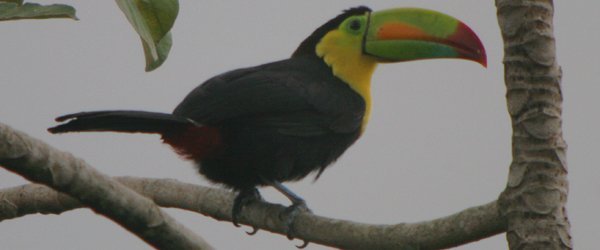 When choosing a national bird many countries choose instantly recognizable members of their avifauna which is often a wise idea. After all, if a bird is to be a symbol it should be easily recognized, even when represented abstractly. And the Keel-billed Toucan, the national bird of Belize, is nothing if not easily recognizable. But how did Ramphastos sulfuratus become the national bird of this former British colony?
When choosing a national bird many countries choose instantly recognizable members of their avifauna which is often a wise idea. After all, if a bird is to be a symbol it should be easily recognized, even when represented abstractly. And the Keel-billed Toucan, the national bird of Belize, is nothing if not easily recognizable. But how did Ramphastos sulfuratus become the national bird of this former British colony?
From 1786, when the British appointed a superintendent over the colony of Scottish and British settlers known as Baymen, until 1981, when it was granted independence, Belize, which was known until 1973 as British Honduras, was a colony of the United Kingdom. Even after independence the British kept a substantial number of soldiers in Belize because Guatemala, Belize’s neighbor to the west and south, refused to recognize Belize and claimed its territory as its own until 1992. The vast majority of British soldiers finally withdrew in 1994.
What does all of that have to do with how the Keel-billed Toucan became the national bird of Belize? Not much, except that the decision on all of Belize’s national symbols was done in a most orderly and systematic way in 1981 when independence was achieved. A bipartisan commission of Belize’s two major political parties, the United Democratic Party and the People’s United Party, decided them all in 1981. No fuss, no muss.
A line from the national anthem of Belize proclaims, “Nature has blessed thee with wealth untold.” With a national bird like the Keel-billed Toucan that would be a difficult claim to dispute.
…
Want to see all of the national bird posts on 10,000 Birds? Click on our National Birds page!
…












Leave a Comment